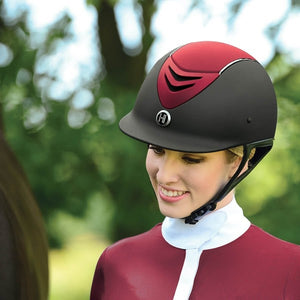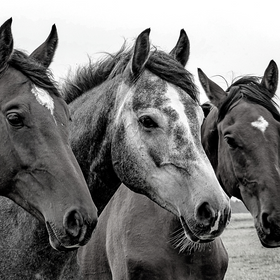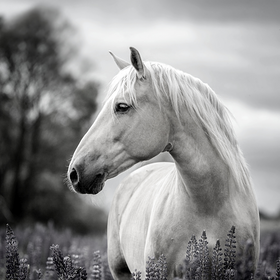
Combined Driving (CDE) at a Glance
Combined driving events (CDE) are designed to test a driver and their horse, or horses, in three phases under harness. These phases consist of Driven Dressage, Marathon, and Cones. Drivers can compete with a single horse (or pony), a pair of horses or a team of four. Drivers can also choose the setup of their team. For example, you can drive a pair (side-by-side) or in a tandem (one horse in front of another).
Patterned after three-day eventing, CDEs are done over a three day period where speed, accuracy, and endurance are tested. CDEs are judged on a penalties system, so the lowest combined score for all of the phases wins. There are several levels of difficulty in combined driving and veterans of the sport always recommend thorough mastery before moving up.
Competitive Driving today is very different from where it first started with chariot racing. The first standardized rules for competitive driving are relatively new, being developed in the early 1970s. Now Combined Driving is one of the eight equine sports governed at an international level by the FEI and at the national level by the USEF.
Driven Dressage
The Driven dressage portion of the competition is completed first, testing the harmony, impulsion, ease of movement and suppleness of the team. The team is given a sequence of movements and gaits, much like dressage under saddle, to complete in an arena. Penalties are given to the team for inaccuracy or missed movements.
The dressage phase requires a slightly different set of tack than the marathon phase of competition. First, a presentation carriage, usually a two-wheel gig or Meadowbrook, is used for both the dressage phase and the cones course. While this is not a requirement, most drivers use this lighter style of carriage and a traditional leather harness for easier transport and reinback maneuvers.
Marathon
Normally, the second phase is the cross-country marathon. The marathon tests endurance and agility as well as accuracy. The team must navigate a series of hazards including water, steep hills, and sharp turns as quickly as possible. The course length and difficulty will range depending on the level of competition, but most courses are between eight and eighteen kilometers. Obstacles are placed roughly one kilometer apart.
Four-wheeled marathon carriages are used during this phase of competition. These carriages are designed for stability and precision turning. They also have integrated brakes which help during certain portions of the course, specifically the steep hills. Marathon carriages have curved, dropped shafts (connect lower on the carriage than a traditional shaft) which require a specific style of harness for connection. Marathon harnesses are also designed for quick release in the event of an emergency on the course.
Cones
The final phase is the cones course, where the teams must accurately navigate an intricate, narrowly-set cones course without knocking any down. The team must complete twenty obstacles in the correct order and direction within a specific amount of time. Penalties are given for cones being knocked down.





